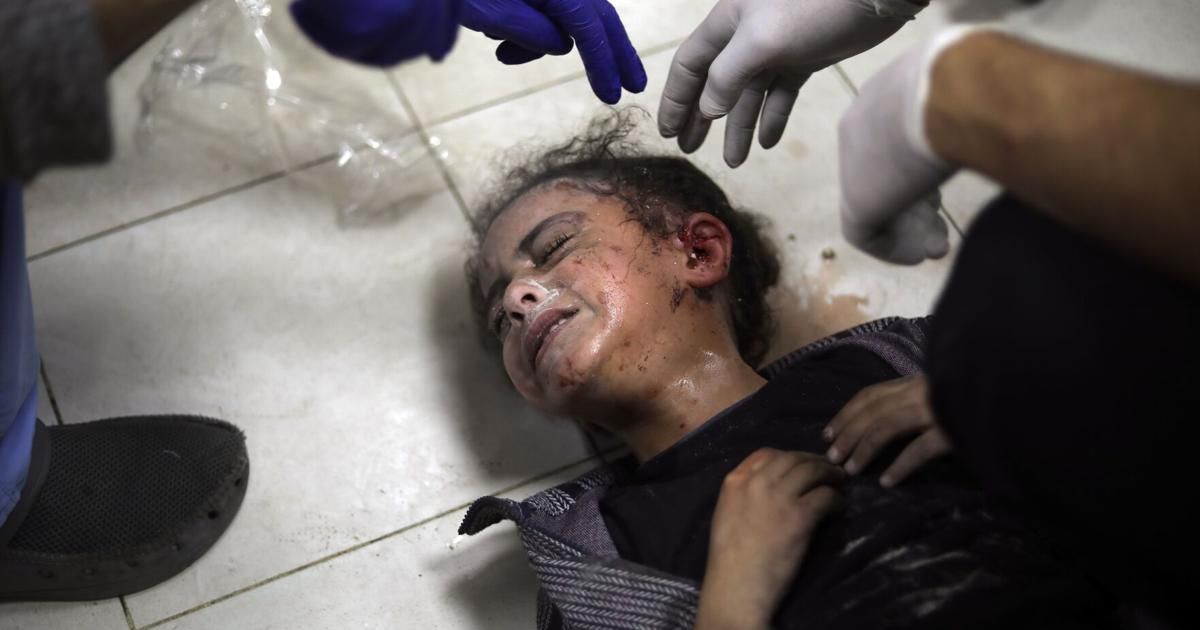
Palestinians are dying every day in Gaza’s overwhelmed remaining hospitals which can’t deal with the tens of thousands people hurt in Israeli’s military offensive, a U.N. health emergency expert said Wednesday, while a doctor with the International Rescue Committee called the situation in Gaza’s hospitals the most extreme she had ever seen.
The two health professionals, who recently left Gaza after weeks working in hospitals there, described overwhelmed doctors trying to save the lives of thousands of wounded people amid collapsing hospitals that have turned into impromptu refugee camps.
The World Health Organization’s Sean Casey, who left Gaza recently after five weeks of trying to get more staff and supplies to the territory’s 16 partially functioning hospitals, told a U.N. news conference that he saw “a really horrifying situation in the hospitals” as the health system collapsed day by day.
Al-Shifa Hospital, once Gaza’s leading hospital with 700 beds, has been reduced to treating only emergency trauma victims, and is filled with thousands of people who have fled their homes and are now living in operating rooms, corridors and stairs, he said.
“Literally five or six doctors or nurses” are seeing hundreds of patients a day, Casey said, most with life-threatening injuries, and there were “so many patients on the floor you could barely move without stepping on somebody’s hands or feet.”
The Health Ministry in Hamas-run Gaza estimates that 60,000 people have been wounded, with hundreds more wounded per day.
Since Israel declared war against Hamas following its surprise attacks into the country’s south on Oct. 7, it has repeatedly accused the Islamic militant group of using Gaza’s hospitals as cover for military activities. It singled out Al-Shifa in Gaza City, saying Hamas had hidden command centers and bunkers underneath the hospital’s sprawling grounds. In late November, the Israeli military unveiled what it claimed was a Hamas military facility under the hospital.
Casey said he was able to reach Al-Shifa three times with deliveries of medical supplies, fuel and food, but once it took 12 days because of Israeli refusals, mainly for security or operational reasons.
At Al-Ahli Hospital, also in Gaza City, the situation was also dire, he said.
“I saw patients who were lying on church pews, basically waiting to die in a hospital that had no fuel, no power, no water, very little in the way of medical supplies and only a handful of staff remaining to take care of them,” he said.
Last week, Casey said, he visited the Nasser medical complex, the main hospital in Khan Younis, which is at 200% of its bed capacity with only 30% of its staff, so “patients are everywhere, in the corridors, on the floor.”
“He went to the burn unit where there was one physician caring for 100 burn patients,” he said.
Even in Rafah in the south near the Egyptian border, where Israel has urged Gazans to move, Casey said the population has skyrocketed from 270,000 a few weeks ago to almost a million, and the city doesn’t have the health facilities to deal with the massive influx of displaced people.








